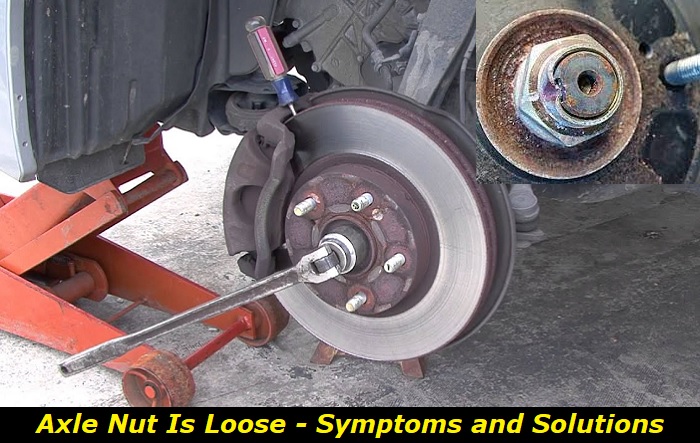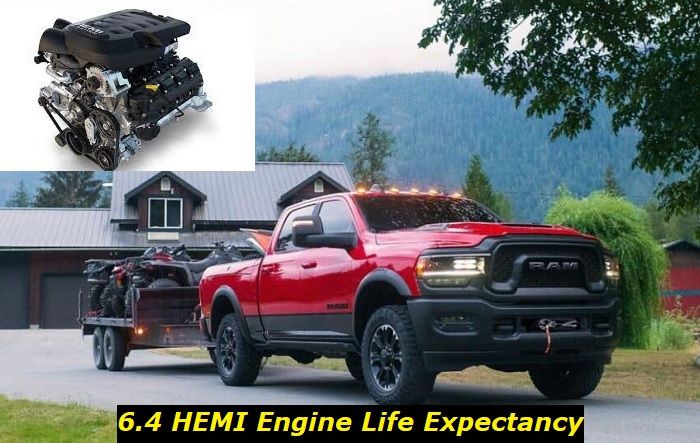Your car is powered by an engine that transfers energy onto the transmission system. The energy is further transferred to the axle and then to the wheels. An ordinary small vehicle comes with two axles, while trucks and buses can have more than two axles. There is the front axle and the rear axle.
Drive shaft problems highlights
- Level of importance:high
- Common reasons:old drive shaft, accidents, broken rubber protection
- DIY inspection:possible
- DIY repair:impossible
- Average price in shops:$250 - $500
- Average time:2 - 3.5 hours
- If ignored: no-drive, unpleasant sounds, hub wear

What is an axle nut?
An axle nut is a wheel component that is used to secure the wheel to the axle. The axle nut is a single nut located at the center of the lug and is considerably bigger than the lug nuts. The axle nut is designed to secure the wheel hub to the axle, while the lug nut is meant to secure the wheel to the wheel hub.
Your vehicle has a large bar running from the front to the rear. This bar, called the driveshaft, has two arms, both at the front and rear. The driveshaft is connected to the engine, the transmission, and the steering system. The arms or bars protruding from the drive shaft are called axles and are the ones where the wheels are secured. Of course, you will find vehicles with CV joints, but these also work under the same principle of making the car tires spin.
The axle nut is usually covered with a plastic cap. The axle nut cap normally bears the car's brand emblem. If it's a Volkswagen, a VW logo can be found here. The axle nut is critical in ensuring the driveshaft transfers power to the wheels. The nut also plays a significant role as far as the vehicle's steering is concerned.
A loose axle nut
The axle nut should always stay tight. If it becomes loose, you will need to sort the issue immediately. A loose axle nut means that the powertrain is incomplete and the right amount of power is not getting to the wheel. Severe damage to vehicle components may arise when you continue driving with a loose axle nut. There are several reasons why the axle nut can become loose;
- A faulty wheel bearing makes the hub uneven and thus can loosen the nut.
- A cotter pin that is not sitting correctly against the axle nut. Using the wrong cotter pin can also cause the nut to loosen.
- Failing to torque the nut properly. If you loosen the axle nut for whatever reason, you must torque it besides tightening it. Tightening the axle nut is insufficient, and the right tools should be used to torque it.
- A faulty axle nut could be the reason why it keeps coming off.
What will happen when you have a loose axle nut
When the axle nut becomes loose, a number of things can happen, ranging from minor to severe. As stated above, the axle nut holds the wheel securely to the axle. Because of being held in place, the wheel effectively responds to the drivetrain and the steering. It is important to note that an axle nut coming loose will not immediately mean that the wheel will come off.
The strut and the wishbone hold the wheel, too, via the bearing, but they don't secure it to the axle. The axle nut is the one securing the wheel to the axle. This is the reason why the wheel will not immediately come off when the axle nut becomes loose.
A loose axle nut means that the wheel moves to the very end of the drive shaft, which then means the wheel will not receive power, and steering will become problematic. Because many modern cars have open wheel differentials, it will become impossible to drive the vehicle.
The axle nut or the hub nut becoming loose means the wheel will play a lot because nothing will hold it in place. The wheel will move to the tip of the driveshaft, and this can cause the shaft to bend. The threads on the driveshaft end will also get damaged. Besides the driveshaft getting damaged, the differential will get messed up.
It is worth noting that the wheel is secured to the hub by the lug nuts. The brake caliper retains the rotor and also needs to malfunction for the wheel to come off. The axle nut should come off, and a combination of other components fail for the wheel to come off. Realistically, the chance of this happening is very rare. The other reason the wheel can come off is if the lug nuts are not tightened or have been over-tightened, making them break.
Symptoms of a loose axle note
An axle nut coming loose causes a wide range of problems if not caught early enough. Before it reaches a point where the wheel comes off, here are the symptoms you might note and avoid such an occurrence;
- The wheel coming off is undoubtedly the first symptom that the axle nut is loose or lost.
- The vehicle won't move. This is because the driveshaft will fall off the hub, disconnecting the driveshaft and the wheel.
- The vehicle will vibrate vigorously because the wheel will have a lot of play. The whole hub will be moving about the driveshaft, making the wheel vibrate and unstable.
- A grinding noise can be heard when you drive. There is all manner of noise, from grinding and squeaking to screeching. The noise tends to be directly related to the load in the car and can be more pronounced when driving downhill.
- The bearing gets damaged. When you drive your car with a loose axle nut for some time without repairing this, the bearing gets damaged because of the vehicle's weight.
What to do when the axle nut becomes loose
The axle nuts of your vehicle are designed to be tightened in a particular way. Some expertise is needed when tightening this axle component, as it is the one that holds the wheel in place and allows it to rotate freely. Overtightening it, or lack of it can give rise to a number of consequences, as stated above.
- Tightening the axle nut using a torque wrench
One should use a designated torque wrench when working on axle nuts. This is important because you are basically setting the geometry of the rolling components and the outer ones of the wheel bearing. The preload of the wheel bearing is critical for the axle nut's longevity and your vehicle's safety. If the axle nut is not set properly, you will experience premature wear on the wheel bearing, making it prone to fail sooner than later.
To tighten the axle nut, you must follow the service manual provided by the car manufacturer. Every manufacturer has a specified tightening sequence for both the axle and lug nuts. The torque specs range from 85 ft per pound to 250 ft per pound.
It is important to note that your personal torque wrench should be calibrated every other year to ensure it is properly tuned. When done tightening the axle nut, store the wrench at the lowest setting rather than the highest. When left at the highest setting, the spring inside stays stretched, making it lose tension and inaccurate.
- Tightening the axle nuts without a torque wrench
There are times or places when accessing a torque wrench can be impossible or difficult. Mechanics have mastered a way to torque the axle nut without using a torque wrench. Some of the tools used in this procedure include;
- A socket extension bar and a drill bit
- Using a standard wrench as an extension bar. Some people use two wrenches.
- Using the car's caliper and bolts as extensions.
- Using an extension bar fixed with a bolt head and a C-Clamp.
Conclusion
The axle nut on every vehicle wheel is a critical component in how the vehicle functions and the overall safety of the vehicle. Yet, it is one of the car parts that most people know little about. When it becomes loose, the vehicle will have all manner of symptoms which, if the issue goes unattended, can escalate and become severe. If these symptoms are worked on early enough, all you are required to do is tighten the axle nut.
It is possible not to have access to a torque wrench to help you work on the axle nut. However, it would be best if you made every effort to take your car to a garage where these tools are available or an expert is present. Every car make and model has specific axle nut torque tightening specifications, which is why you need a designated torque wrench.
About the authors
The CarAraC research team is composed of seasoned auto mechanics and automotive industry professionals, including individuals with advanced degrees and certifications in their field. Our team members boast prestigious credentials, reflecting their extensive knowledge and skills. These qualifications include: IMI: Institute of the Motor Industry, ASE-Certified Master Automobile Technicians; Coventry University, Graduate of MA in Automotive Journalism; Politecnico di Torino, Italy, MS Automotive Engineering; Ss. Cyril and Methodius University in Skopje, Mechanical University in Skopje; TOC Automotive College; DHA Suffa University, Department of Mechanical Engineering






Add comment